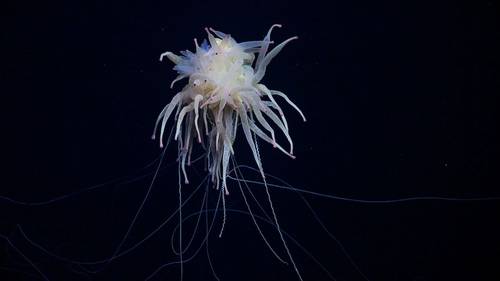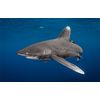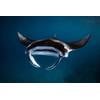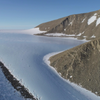“Flying Spaghetti Monsters” Photographed at Newly Discovered Seamount
A team of oceanographers led by Schmidt Ocean Institute have discovered and mapped a new seamount on the Nazca Ridge in international waters, 900 miles off the coast of Chile, and photographed rare species, including siphonophores nicknamed “flying spaghetti monsters”.
The Nazca Ridge, an underwater mountain chain, along with the adjoining Salas y Gómez Ridge, is one of several global locations under consideration for designation as a high seas marine protected area.
The seamount discovery is one of many from a 28-day expedition to the international waters of the Nazca Ridge led by Schmidt Ocean Institute in partnership with Ocean Census and the Center for Coastal and Ocean Mapping/Joint Hydrographic Center at the University of New Hampshire.
The newly discovered underwater mountain is over 1.9 miles (3109 meters) tall and supports a thriving deep-sea ecosystem. In addition to mapping the seamount, the team conducted an exploratory dive with an underwater robot on one of the mountain’s ridges, finding sponge gardens and ancient corals.
The team mapped and explored nine additional unprotected features on this Southeast Pacific underwater mountain range. One of the mountains harbors a pristine coral garden consisting of deep-sea corals that provide shelter for an array of organisms such as rockfish, brittle stars, and king crabs. With an area of approximately 800 square meters, this coral garden is about the size of three tennis courts.
Beyond mapping seamounts to high resolution and conducting ROV surveys, the team captured the first camera footage of a live Promachoteuthis squid, a genus that is so rare that only three species have been described based on only a few collected specimens, several of which are from the late 1800s.
Until now, the squid genus has only been characterized from dead samples found in nets. They also documented a Casper octopus, the first time this species has been seen in the Southern Pacific, and two rare Bathyphasa siphonophores, commonly known as flying spaghetti monsters.
“Upon concluding our third expedition to the region, we’ve explored around 25 seamounts on the Nazca and Salas y Gómez Ridges,” said Co-Chief Scientist and Schmidt Ocean Institute Marine Technician, Tomer Ketter. “Our findings highlight the remarkable diversity of these ecosystems, while simultaneously revealing the gaps in our understanding of how the seamount ecosystems are interconnected. We hope the data gathered from these expeditions will help inform future policies, safeguarding these pristine environments for future generations.”
The expedition was the third exploration this year of the Salas y Gómez and Nazca Ridges conducted on the Schmidt Ocean Institute’s R/V Falkor (too). Two previous expeditions in January and February documented over 150 previously unknown species and numerous range extensions for animals not previously known to live on the ridge.
An additional 20 suspected new species were collected during this expedition.
Prior to Schmidt Ocean Institute’s expeditions this year, 1,019 species were known to live in this portion of the Pacific Ocean. The number now exceeds 1,300 and is growing. The records will be sent to the Ocean Census, an international, collaborative alliance led by the Nippon Foundation and Nekton to accelerate the discovery and protection of ocean life.














 August 2025
August 2025



